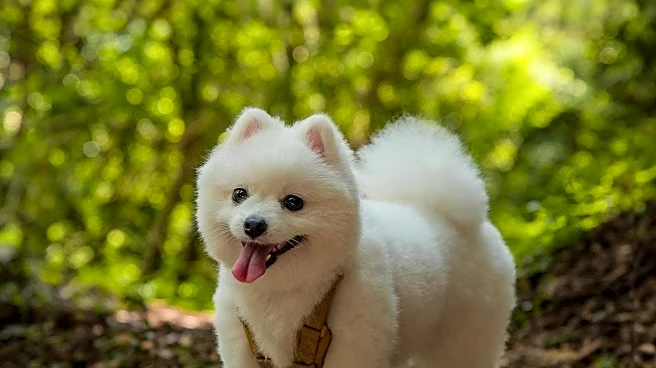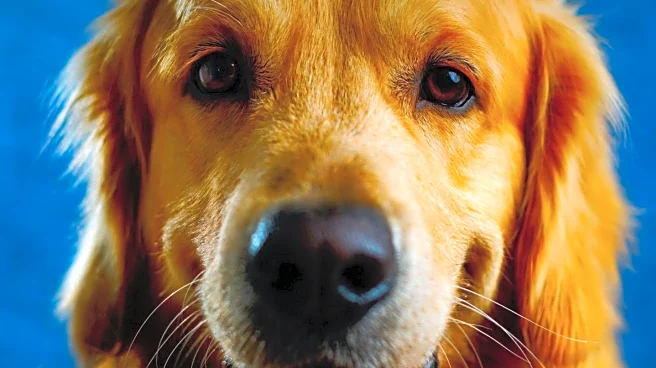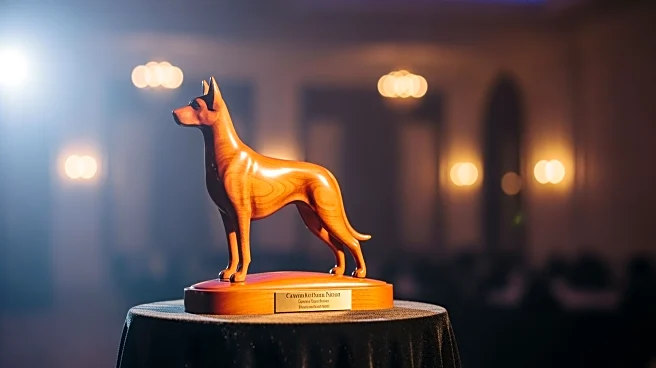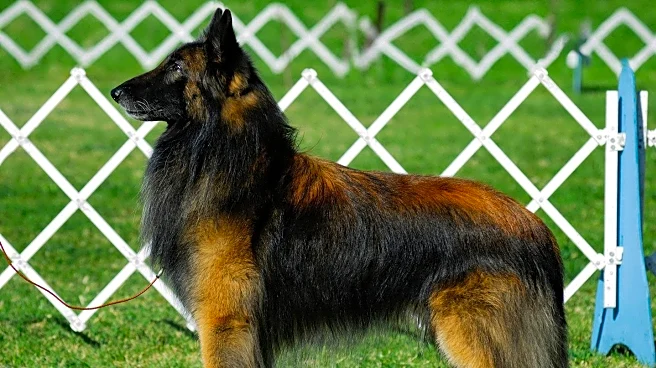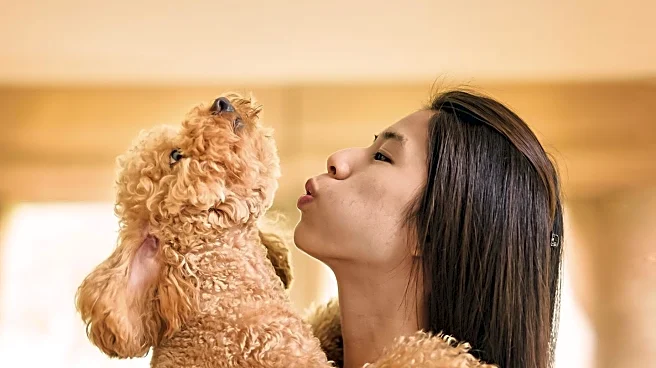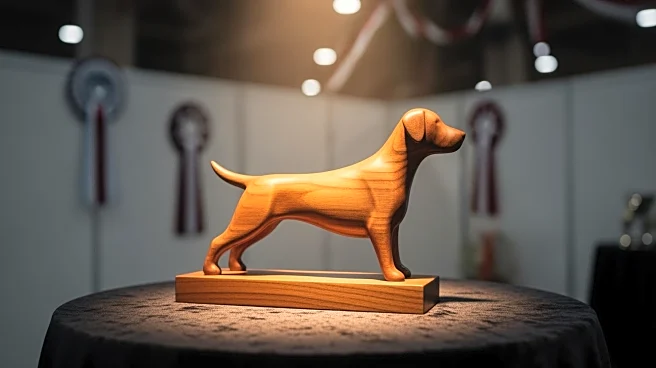What's Happening?
A pomsky named Lu, a mix between a Pomeranian and a Husky, has become an internet sensation after a video showcasing her unique appearance went viral on TikTok, amassing over 5.9 million views. Lu's owner,
Yvonne Sjoberg, shared the video to highlight the pomsky's striking features, including her blue eyes and fluffy coat. The pomsky breed, which combines the Husky's distinctive look with the Pomeranian's compact size, is relatively new and not officially recognized by major kennel clubs. Despite this, the breed has gained popularity through social media, where images of miniature Huskies have captivated audiences worldwide.
Why It's Important?
The viral success of Lu the pomsky underscores the growing influence of social media in shaping public interest and trends in pet ownership. As breeds like the pomsky gain visibility online, they attract potential pet owners who are drawn to their unique characteristics. This trend can impact the pet industry, driving demand for specific breeds and influencing breeding practices. Additionally, the popularity of such breeds can lead to increased awareness and interest in responsible breeding and pet care, as enthusiasts seek to understand the health and temperament of these animals.
What's Next?
As the pomsky breed continues to gain attention, breeders may focus on stabilizing the breed's characteristics, including temperament and health, to meet the growing demand. Social media platforms will likely continue to play a significant role in promoting and popularizing new and unique breeds, influencing consumer preferences and trends in pet ownership. This could lead to further developments in breeding practices and the establishment of breed standards, as enthusiasts and breeders work to gain official recognition for the pomsky.
Beyond the Headlines
The rise of the pomsky breed highlights broader cultural shifts in pet ownership, where social media plays a pivotal role in shaping perceptions and preferences. This phenomenon reflects a growing trend of pet owners seeking unique and exotic breeds, driven by the desire for individuality and novelty. The ethical implications of breeding practices, particularly concerning artificial insemination and genetic health, may become more prominent as the popularity of such breeds increases. This could lead to discussions about responsible breeding and the importance of maintaining genetic diversity and health standards.
